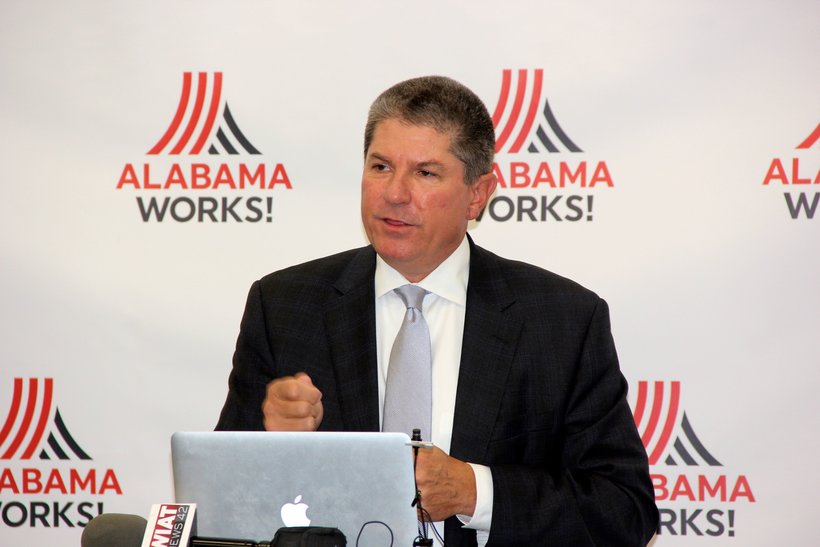
BIRMINGHAM, Ala. – Workers in Alabama assemble rockets that blast satellites into orbit, warships that patrol the seas, automobiles that are driven around the world. They design aircraft components, identify cancer-fighting drugs, operate robots that keep factory floors humming.
But Alabama’s workforce can’t operate on autopilot. How can we make sure that the state has enough workers with the right talents for all these in-demand jobs and countless others in a $184 billion economy?
That’s the mission of the Alabama Workforce Council (AWC), a new organization that is launching an effort that will redesign workforce development in the state. The group’s work is aimed at better preparing the state and its workers for the next round of challenges, which include the need for a new generation of skilled workers and programs that integrate classroom instruction and career exploration for students.
Governor Robert Bentley appointed 35 business, education and political leaders from across state to the AWC in July, after receiving a recommendation from his College and Career Ready Task Force to set up a panel to assist top state educators on developing workforce development initiatives and career-focused tracks for students.
“The workforce council ties into a plan to grow Alabama’s economy that we put in place after I came into office,” Governor Bentley said. “It’s called Accelerate Alabama, and nothing will accelerate growth in Alabama’s economy more rapidly than developing the skills of the state’s workers because that will help us recruit even more jobs.”
The timing of the AWC initiative is right. Projections say that a shortage of skilled workers could hamstring businesses in Alabama as masses of the baby boom generation begin to retire from the workforce. Economists also say Alabama needs to develop strategies to get more of its citizens into the workforce to prevent the labor force from shrinking.
Dr. Samuel Addy, director of research economist at the University of Alabama’s Culverhouse School of Business and Economic Research, said the state must respond to these workforce challenges to keep its edge in economic development and recruitment targeting new investment and jobs.
“When you talk about workforce development, you’re really talking about economic development,” Dr. Addy said. “That’s the main point of economic development – jobs. Anybody who says differently doesn’t know what they are talking about.”
THE COUNCIL
Members of the AWC have experience in virtually every facet of Alabama’s business world. The team includes senior managers from companies such as Mercedes-Benz, Airbus, Honda, Austal, and other larger manufacturers, as well as leaders from smaller companies from across the state.
The heads of Southern Research Institute and the UAB Health System are on the panel, as well as the director of career and technical education for the Alabama Department of Education. The AWC also includes an economic developer from Cullman, the former mayor of Phil Campbell, and an executive from Bryant Bank.
“We’ll be engaging with anyone and everyone who is interested in educating and training our students for the future,” said Zeke Smith, an Alabama Power executive vice president selected to head the AWC. “The purpose of this council is to take education, government, and industry, and explore ways that unite us and create a more productive workforce.”
Governor Bentley said the AWC will serve as an advisory body to ensure Alabama’s workforce development programs are positioned to meet the most pressing job needs of business and industry. The council will advise the superintendent of the State Department of Education, the chancellor of the Alabama Community College System (ACCS) and university presidents on how they should design new programs and initiatives.
Though the AWC has only recently begun its work, the council has been asked to take a hard look at education-related issues such as these:
• Increasing the number of workforce development partnerships between businesses and schools, including industry-funded “scholarship” programs for technical education;
• Creating meaningful metrics that can be used to improve collaboration between business and education on workforce programs;
• Expanding industry credentialing programs at the K-12 level and technical training for high school students through “dual enrollment” programs and other initiatives;
• Increasing the number of career coaches to serve students in all public middle and high schools in Alabama;
• Better informing young people about opportunities available in manufacturing and other occupations that pay above-average wages.
“The members of the council are confident that as a result of our recommendations, more students will graduate with a better idea of where they want to go in terms of higher education or careers, what they want to do, and what steps will be required to pursue those career paths,” Smith said. “These students will be more prepared for successful college careers, with fewer needing to devote time and resources to remediation.
“Additionally, more adults will have information on career opportunities, where to go for job retraining, and what resources and funding might be available for education and skill programs,” he added.
TARGETING NEEDS
The AWC improvement campaign also will extend to Alabama’s existing workforce development programs.
Based on a recommendation from the Governor’s College and Career Ready Task Force, the AWC will examine whether to streamline and re-align the existing workforce development functions of state government, which are currently shared by a number of different agencies.
While the programs are considered effective, officials say businesses aren’t always immediately sure where to turn to get help. Streamlining could result in a more efficient use of resources while also reducing confusion.
The Task Force also recommended that the AWC identify ways to support and expand the operations of Alabama’s 10 Regional Workforce Development Councils, which provide vital front-line information on training gaps at the local level.
Other goals of the AWC include identifying critical unmet needs for specialty skills in specific areas of the state and creating what some have termed a “statistical feedback loop” that would lay the groundwork for enhanced cooperation between business and education.
“A feedback loop should be established to create dialogue between the education community and interested businesses and industries. This can be done by working with and through various education and industry groups, organizations, and trade associations,” Smith said.
“Dialogue can also be created by scheduling meetings between these groups and by having industry representatives complete surveys about their current and future hiring needs as well as the ways in which the education community could assist industry in preparing students for future employment.”









